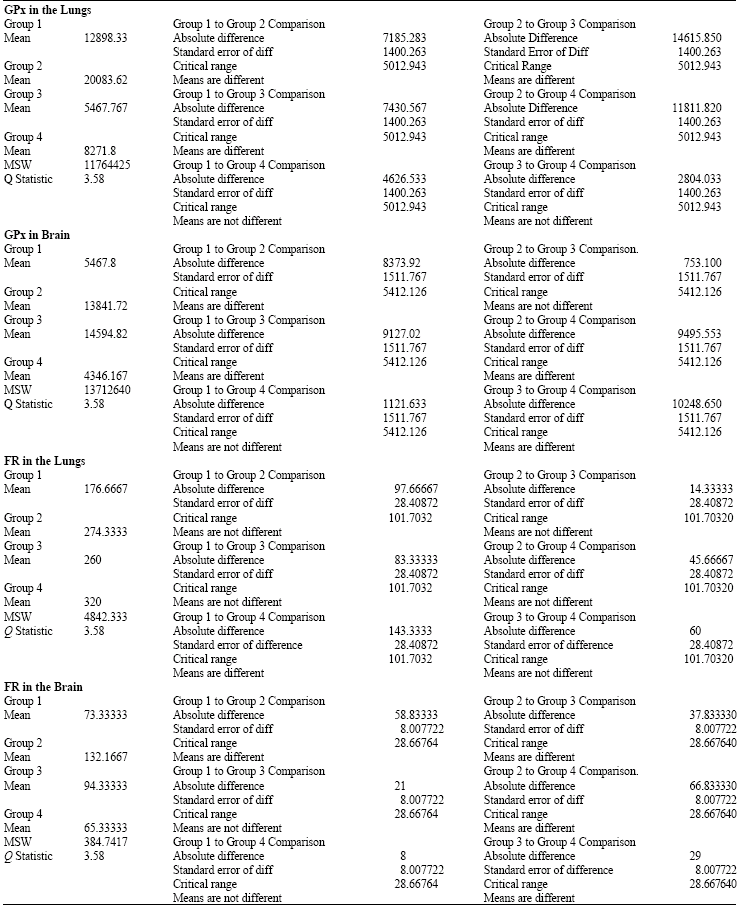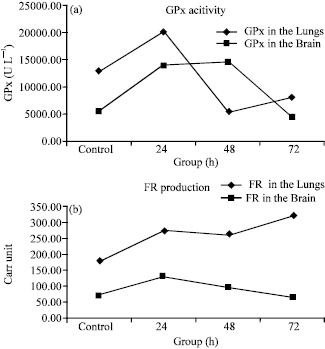Research Article
Comparison of Glutathione Peroxidase Activity and Free Radicals Production in the Lungs and the Brain of Rats During Graded Hyperoxia
Department of Physiology, College of Medicine, King Khalid University, P.O. Box 641, Abha, Aseer, Kingdom of Saudi Arabia













